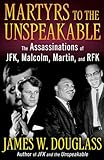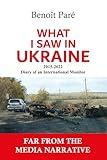The episode of 25 April, dedicated to the 80th anniversary of the liberation from Nazi fascism, begins with the memory of Livia Gereschi. She was a foreign language teacher who, during a round-up by an SS unit in La Romagna in the Pisan Mountains on the night of 6 to 7 August 1944, rescued women and children. She managed to convince the SS commander to release women and children (including the writer and his mother), but was instead taken away with the men and shot on 11 August. The massacre of 69 civilians was carried out by the German 16th SS Panzergrenadier Division with the support of Italian fascists. The same division later committed the massacres of Sant’Anna di Stazzema (Lucca), Marzabotto (Bologna), and others.
The writer Manlio Cancogni recounts the massacre of 560 civilians on 12 August 1944 in the village of Sant’Anna di Stazzema through the testimony of survivors:
Germans led more than 140 people forcibly taken from their homes to the square in front of the church. They took them almost from their beds, half-clothed, their limbs still numb from sleep. They piled them first against the front of the church, and when they aimed their machine-gun barrels at these bodies, they had them so close that they could read in the stunned eyes of the victims, who fell under the blows without even having time to cry out. They piled the benches of the devastated church, the mattresses taken from the houses on top of the pile of still warm and perhaps still living bodies and set them on fire. And as they watched, unsatisfied, as the corpses were consumed, they pushed other men and women into the brazier, who were then led to the site, lifeless with fear. And then there were the children, the tender bodies of the children who served to excite this mad lust for destruction. They smashed their heads with the butt of their machine-gun, stuck a stick in their abdomens and nailed them to the walls of the houses. Seven of them were taken and put in the oven prepared that morning for bread and left there to roast.
The history of Nazism and its atrocities did not end with the defeat of Nazi Germany eighty years ago. Hitler’s Nazism – history shows us – was an instrument of Western domination. It is therefore not surprising that Nazism re-emerged in Europe when the West again attacked Russia by organising the coup in Ukraine. Through the CIA and other intelligence services, neo-Nazi militants are being recruited, financed, trained and armed to go into action on Kiev’s Maidan Square in February 2014. The neo-Nazi formations are then incorporated into the National Guard trained by US instructors from the 173rd Airborne Brigade, transferred from Vicenza (in the North of Italy) to Ukraine, and joined by others from NATO.
The Ukraine of Kiev becomes the nursery of resurgent Nazism in the heart of Europe. Neo-Nazis arrive in Kiev from all over Europe (including Italy) and the USA, recruited mainly by Pravy Sektor and the Azov Battalion, whose Nazi imprint is represented by the SS Das Reich emblem. After being trained and tested in military actions against Ukrainian Russians in the Donbass, they are sent back to their country with a Ukrainian passport. At the same time, Nazi ideology is being disseminated among the younger generation in Ukraine. The Azov battalion is particularly involved in this regard, organising military training camps and ideological education for children and young people, who are taught first and foremost to hate Russians.










